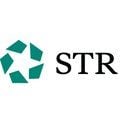STR Weekly Insights: 1-7 January 2023
Countries included in this week’s update: U.S., Japan, China, Barbados, Aruba, Cayman Islands, Germany, Luxembourg, Monaco
U.S. performance
U.S. hotel occupancy started the year at 47.2%, up 1.8 percentage points (ppts) from last year but down considerably from 2019 due to a holiday calendar shift. The comparable week of 2019 (6-12 January) was a complete non-holiday week versus. Nominal average daily rate (ADR) increased 17.2% year over year (YoY) to US$143. Nominal revenue per available room (RevPAR) was up 21.8% YoY to US$67.
At a market-level, the Florida Keys posted the highest occupancy level at 86%. Among the Top 25 Markets, Las Vegas saw the highest occupancy (73.5%) followed by Oahu (72.5%) and Orlando (71.3%). New York City saw weekly occupancy increase 20ppts YoY to 65.6%. All but six of the Top 25 Markets saw higher weekly occupancy than a year ago. Of those six, Detroit, Dallas and Denver posted declines greater than a point.
Most U.S. markets (62%) saw occupancy increase over the comparable weekend in 2022. The nation’s highest weekend occupancy was seen in the Florida Keys (82.6%) and Hawaii/Kauai (80.3%). Las Vegas also had a healthy weekend (79.8%) due to higher-than-expected attendance at this year’s Consumer Electronics Show (5-8 January).
The Las Vegas Strip submarket (88.8%) posted the highest weekend occupancy of the any U.S. submarket. Overall, 58% of all U.S. submarkets saw weekend occupancy advance year over year. This was the first week with Las Vegas performance data included in STR’s reporting thanks to the rollout of new non-participant modeling in the U.S.
While real weekly ADR was below 2019, real weekend ADR was far higher among the Top 25 Markets and all others. Outside of the weekend, real ADR was 16% less than the 2019 benchmark among the Top 25 Markets with Monday and Tuesday down an average of 27%. The remaining markets had a real ADR deficit to 2019 of only 2.5% from Sunday to Thursday.
Real RevPAR for the week was down 16% compared to the comparable week of 2019 with the largest deficits in non-weekend days and among the Top 25 markets. Like ADR, the measure was above 2019 on the weekend
Global performance
Excluding the U.S, global hotel occupancy increased 10.2ppts YoY to 51.7%. This was 9.1 ppts behind the comparable week in 2019. Nominal ADR grew 30.7% YoY to US$155, which was the second highest level of the pandemic-era behind the last week of 2022. Nominal RevPAR was up 62.7% YoY to US$80. Both real ADR and real RevPAR were above the comparable week in 2019.
The top 10 largest countries, based on hotel rooms, saw collective occupancy increase by 8ppts YoY with most seeing growth above 10ppts. From that group, Japan had the highest occupancy of the week (62.3%) with Germany (39.3%) at the low end. That sub-40% occupancy level in Germany still represented a 14.5ppt improvement from the same time last year, which was affected by Omicron.
Occupancy in China was flat compared with last year as most markets saw slight decreases despite the relaxation of travel restrictions.
The Caribbean saw the highest occupancy of any subcontinent (68.4%), sitting 3.4 percentage points behind 2019 levels. This boost was supported by leisure travel in destinations such as Barbados (86.6%), Aruba (78.3%) and Cayman Islands (75.5%).
At the other end, Western Europe saw the lowest occupancy at 44.6%, down 11.9 percentage points on the previous week. In addition to Germany, Luxembourg and Monaco saw occupancy levels below 40% for the period. ADR in Western Europe fell 18.7% week over week, which was expected due to New Year’s Eve being included in the data for the previous week.
Final thoughts
The industry started the year on the right footing, growing all performance measures versus a year ago despite New Year’s Day falling on Sunday, and thus, affecting Monday. While the comparison to 2019 was unfavorable, the comparison itself was not very useful this week given the shift in the calendar. In this week’s data, we compared a holiday week versus a full business week in 2019. Hence, the unfavourability.
Looking ahead
Expect to see strong year-over-year growth in most regions given the comparison to last year’s Omicron weakness as well as restrictions easing more and more in Asia. Once we get past Q1, 2019 indices will take a backseat to year-over-year comps will finally be standard once again for most countries. Of course, the Western Hemisphere remains on “recession watch,” with severity and timelines differing by country.
About STR
STR provides premium data benchmarking, analytics and marketplace insights for the global hospitality industry. Founded in 1985, STR maintains a presence in 15 countries with a North American headquarters in Hendersonville, Tennessee, an international headquarters in London, and an Asia Pacific headquarters in Singapore. STR was acquired in October 2019 by CoStar Group, Inc. (NASDAQ: CSGP), the leading provider of commercial real estate information, analytics and online marketplaces. For more information, please visit str.com and costargroup.com.








